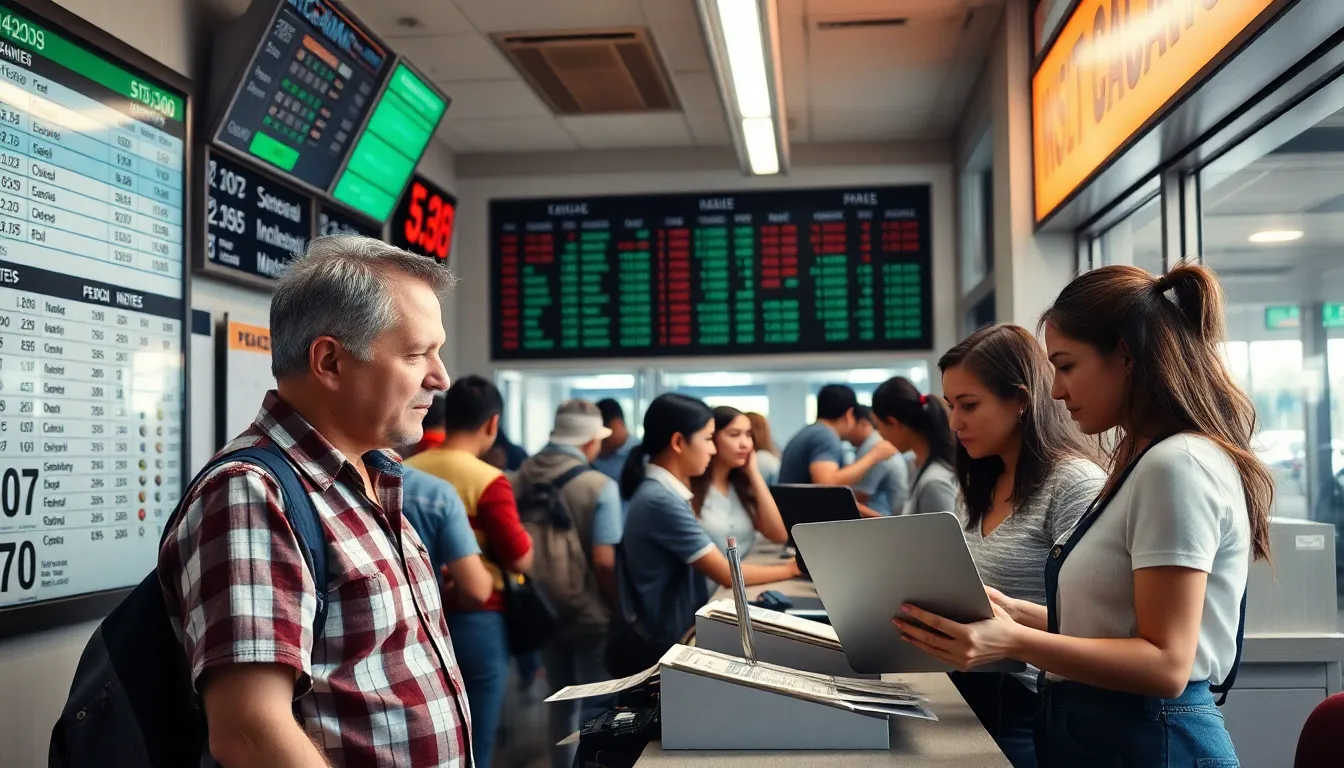Table of Contents
ToggleIn a world where money talks, the exchange rate between the peso and the dollar can feel like a cryptic puzzle. Whether you’re planning a tropical getaway or just trying to make sense of your budget, understanding this currency dance is essential. Don’t let the numbers make your head spin; it’s all about knowing when to make your move.
Overview of Exchange Rates
Understanding exchange rates provides insight into economic stability and trade relations. The peso to USD exchange rate reflects the value of the Mexican peso against the US dollar. Many factors influence this rate, including inflation, interest rates, and economic indicators.
Exchange rates change frequently, often several times a day. Traders and businesses closely monitor these changes to make informed decisions. For instance, a strong peso indicates greater purchasing power in international markets. Understanding trends can help consumers and investors make strategic choices.
The Central Bank of Mexico plays a significant role in managing the peso’s value. They implement monetary policies to stabilize the currency and influence economic conditions. Additional factors, such as political stability and market sentiment, also impact exchange rates.
Current data shows that as of October 2023, the exchange rate stands at approximately 18.50 pesos per USD. This figure can fluctuate based on external market forces and domestic economic policies. Currency converters and financial news platforms provide real-time updates for anyone needing current rates.
Speculative trading also affects exchange rates. Investors attempting to predict future movements may cause the peso to appreciate or depreciate suddenly. Accessible tools and apps simplify monitoring and managing currency conversions for travelers or businesses operating internationally.
Grasping the peso to USD exchange rate entails understanding the dynamics of international finance. A well-informed approach empowers individuals and businesses to navigate currency exchanges effectively.
Factors Influencing The Exchange Rate Peso To USD

Understanding the factors that influence the exchange rate between the peso and the USD can guide individuals and businesses in their currency-related decisions. Key elements include economic indicators and political stability.
Economic Indicators
Economic indicators play a crucial role in determining the peso’s value against the dollar. Inflation rates directly affect purchasing power, where higher inflation in Mexico can weaken the peso. Interest rates also contribute significantly; when the Central Bank of Mexico raises rates, it often attracts foreign investment, boosting the currency’s strength. Additionally, GDP growth figures provide insights into overall economic health, influencing traders’ perceptions. Lastly, trade balances, which reflect the difference between exports and imports, impact currency valuation. A surplus strengthens the peso, while a deficit can lead to depreciation.
Political Stability
Political stability significantly affects the peso’s exchange rate with the USD. Investors favor countries with stable governments, as uncertainty can lead to capital flight. Frequent political turmoil or changes in administration create risk, impacting investor confidence. Legislative decisions also influence economic policies, which can stabilize or destabilize the peso. Furthermore, international relations play a role; strong diplomatic ties with the U.S. often enhance market perceptions of stability. The combination of these factors shapes market sentiment, ultimately affecting the exchange rate.
Historical Trends
The peso to USD exchange rate has fluctuated significantly over the years. Recent data points indicate a trend of gradual depreciation against the dollar.
Recent Performance of Peso Against USD
As of October 2023, the exchange rate stands at approximately 18.50 pesos per USD. Recent economic challenges have placed pressure on the peso. Inflation levels and changes in interest rates have influenced currency valuation. Additionally, external market conditions and investor sentiment contribute to volatility. The peso’s recent performance highlights the complexities of currency trading and the need for continuous monitoring.
Long-Term Patterns
Long-term trends illustrate a series of fluctuations in the peso’s value. Historical data shows the peso faced significant devaluation during economic crises. Periods of relative stability occurred when inflation rates remained manageable and economic policies fostered growth. Political factors also played a critical role, influencing investor confidence over decades. Currency traders often analyze these historical patterns for insights into future movements, recognizing that understanding past behaviors provides context for future predictions.
How To Convert Peso To USD
Converting pesos to USD involves a straightforward process using current exchange rates. Utilize reliable currency conversion tools, such as online calculators or finance apps, which provide real-time updates on exchange rates. Focusing on accuracy is critical, so always check multiple sources to confirm the latest rate.
Visit banks or authorized currency exchange offices for transactions. Many financial institutions allow individuals to convert currency at competitive rates. Always inquire about any service fees associated with the conversion, as these can impact the final amount received.
Consider the context of exchange rates as they fluctuate throughout the day. For example, rates can expect to change several times due to market demand, economic indicators, and geopolitical events. Monitoring these movements helps make informed decisions when converting currency, especially during travel or international transactions.
Exchange rates offer different values for buying and selling currencies, known as bid and ask rates. The bid rate represents what a buyer pays for pesos, while the ask rate reflects what a seller receives. Understanding this distinction plays a significant role in optimizing conversion results.
Track historical exchange rates to identify patterns over time. Analyzing data can help users anticipate fluctuations and strategize conversions accordingly. For instance, if the peso typically strengthens against the dollar during specific months, timing a conversion might yield better results.
Ultimately, converting pesos to USD requires awareness of current rates and market conditions. Staying informed empowers individuals and businesses to make strategic decisions, reducing the impact of exchange rate volatility on their finances.
Understanding the peso to USD exchange rate is essential for anyone involved in travel or financial planning. By keeping an eye on economic indicators and market trends, individuals can make informed decisions that enhance their financial outcomes.
Monitoring fluctuations in the exchange rate allows consumers and investors to strategize effectively, minimizing the impact of volatility. Utilizing reliable currency conversion tools and staying updated on economic news can empower users to navigate currency exchanges with confidence.
Ultimately, a proactive approach to managing currency conversions will lead to better financial stability and purchasing power in international markets.




